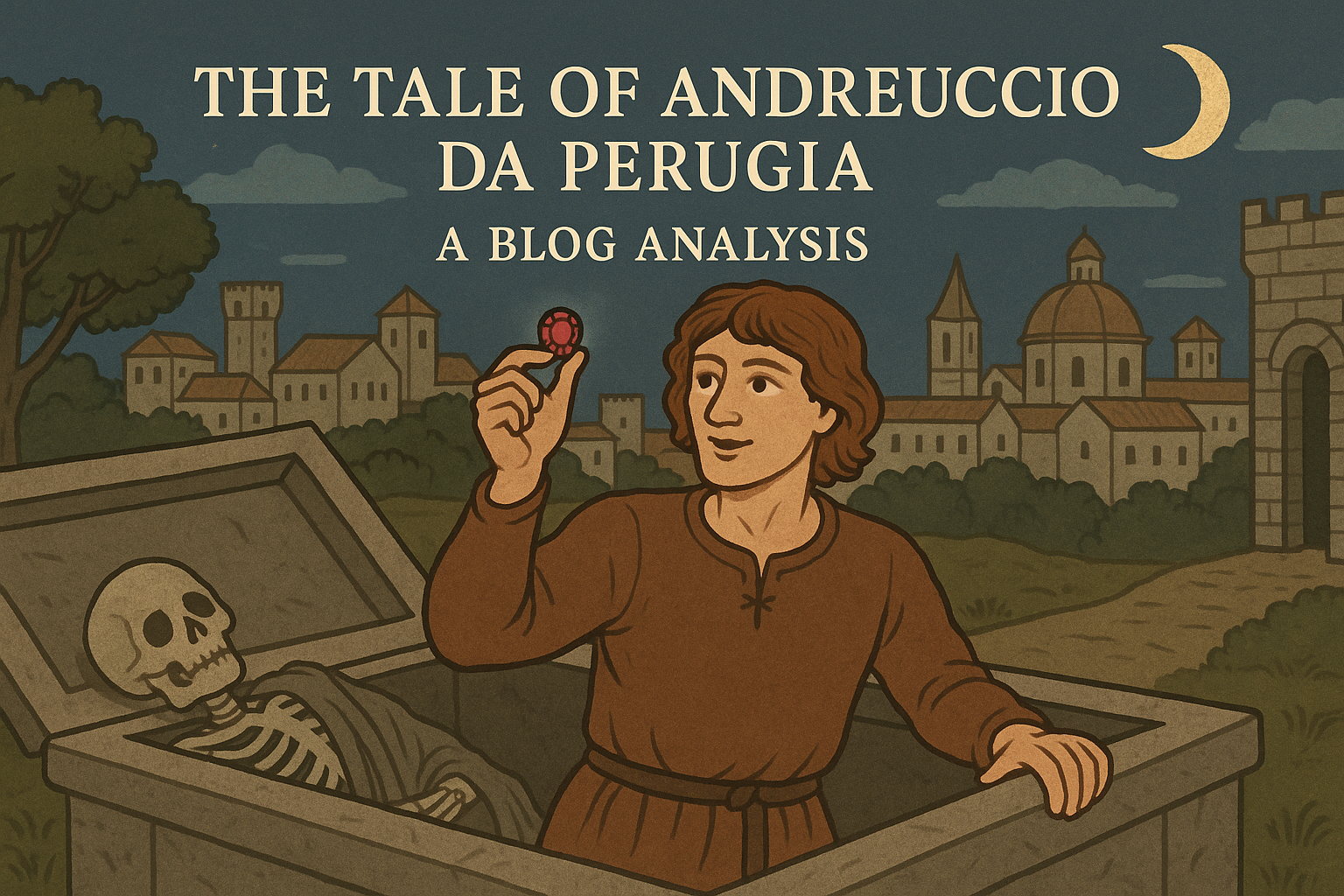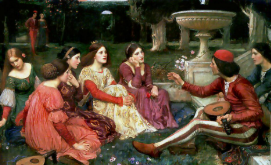“Fortune Favors the Clever: Social Climbing and Survival in the Tale of Andreuccio da Perugia”

Introduction
In Giovanni Boccaccio’s Decameron, the tale of Andreuccio da Perugia (Day II, Tale 5) offers a gripping combination of humor, misfortune, and cunning. Told by Fiammetta on the second day—when the theme revolves around people who face hardships but end up safely—the tale follows a naïve merchant who learns harsh lessons through betrayal and trickery, yet ultimately gains from his ordeal. My analysis focuses on how this tale portrays intelligence, adaptability, and fate, highlighting the fluidity of social and moral boundaries in 14th-century Europe.
Summary
Andreuccio, a young merchant from Perugia, travels to Naples to buy horses. Flaunting his wealth and inexperience, he quickly becomes the target of a cunning prostitute who tricks him, robs him, and leaves him humiliated. As he stumbles through a series of misadventures—including falling into a sewer and being trapped in a tomb—he narrowly escapes death more than once. In a twist of luck and wit, he outsmarts a group of grave robbers and ends up with a valuable ruby ring, returning home wiser and wealthier.
Analysis
At its core, the tale is a social satire, exposing the dangers of naivety in an unpredictable and morally ambiguous world. Andreuccio begins as a fool—a merchant unaware of the con artistry and exploitation awaiting in urban centers like Naples. Boccaccio uses Andreuccio’s humiliation not only for comedic effect but to reflect on the contrast between appearance and experience.
The prostitute’s character represents a reversal of traditional power dynamics; she manipulates male desire and exploits class differences to her advantage. Her success, though temporary, illustrates how wit and knowledge of social terrain can be more powerful than wealth or status. Similarly, Andreuccio’s eventual gain—despite being tricked multiple times—suggests a form of poetic justice that rewards perseverance and adaptability rather than nobility or virtue.
Boccaccio also explores the role of fortune (a recurring theme throughout The Decameron). While chance certainly plays a role in Andreuccio’s survival, it is his eventual ability to think quickly and deceive others—just as he had been deceived—that marks his transformation. He becomes an active agent of his own fate rather than a victim of circumstance.
From a literary standpoint, the story balances irony and realism. The grotesque humor—such as being trapped in a coffin with a corpse—serves to both entertain and warn. The vivid setting of Naples as a lawless, morally complex space enhances the atmosphere of danger and unpredictability.
Personal Response
What stood out most to me was how Boccaccio refuses to clearly label his characters as good or evil. Instead, he presents people as opportunistic survivors shaped by circumstance. I found myself both laughing at and sympathizing with Andreuccio. His journey is both absurd and oddly inspiring, revealing how intelligence and resilience can grow through suffering. I appreciated how the tale refused to offer simplistic moral lessons, instead showing the nuanced reality of navigating a corrupt world.
Conclusion
The tale of Andreuccio da Perugia remains relevant today for its themes of deception, resilience, and survival in unfamiliar environments. In an age where image often masks substance, and where navigating society requires constant adaptation, this tale reminds us that wisdom often comes at a price—and that sometimes, fortune favors not the noble, but the clever. Boccaccio’s storytelling continues to resonate for its rich portrayal of human behavior, making The Decameron a timeless exploration of human folly and triumph.








